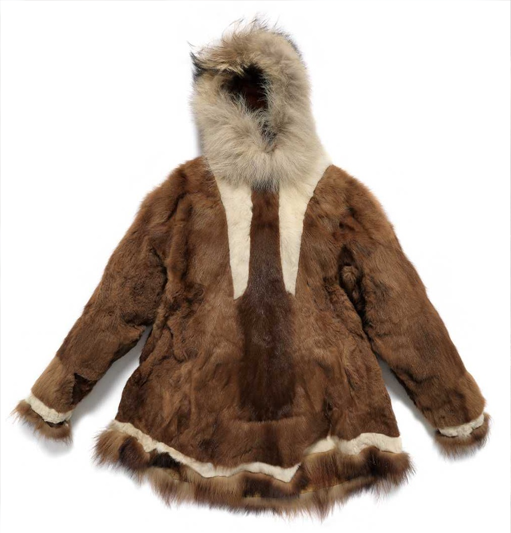Revised as of
19 Nov 2022
Both fur and hair are composed of keratin, a protein that is a polymer of amino acids. It comes down to a name: Human hair is called hair while animal hair is called fur, IF the animal has both ground hair (thick hair that grows to a certain length and stops) and guard hair (fine hair that keeps growing).
It may sound like there isn’t a difference between the two, but when it comes down to the details . . . animals have it all over the humans.
The term fur refers to the body hair of non-human mammals also known as the pelage (like the term plumage in birds). Animals without fur may be referred to as hairless or naked. At certain stages of life, hair is absent in some of the species.
| Fur | Hair |
|---|---|
| Hair growth and its length (both hair and fur) is an individual and species specific trait, which means there are many norms for hair length or fur length in humans and animals. | |
| Many animals are covered all over with hair.
Horses are an example of a mammal with both fur on its body and hair on its mane and tail. |
Humans tend to grow hair in a few selected places.
Whales are nearly hairless. |
| The core of the hair follicle allows for the coating of hair that provides insulation from heat and cold and a fair amount of protection from rain as well. | The core of the hair follicle lacks this ability and does nothing to provide temperature regulation for the body. |
| The texture is thicker and more dense, coarser, with both ground and guard hairs.
Not all animals have both. |
Has the same texture and is less densely packed together. One example is arm and leg hair.
The diameter of human hair ranges from 17 to 181 µm. |
| Used in making fashion clothes, minks, yarn for knitting, brooms, among other things. | Human hair is used in making wigs and hair extensions. Animal hair, a.k.a. wool, is used in making fashion clothes and yarn for knitting. |
Did’ja know that whiskers and quills are distinct types of hairs that are specific to animals. Quills are just enlarged hairs, but whiskers actually have sensory receptors within them.
You may also want to explore “Fir versus Fur” and/or “Hair versus Hare“.
Word Confusions . . .
. . . started as my way of dealing with a professional frustration with properly spelled words that were out of context in manuscripts I was editing as well as books I was reviewing. It evolved into a sharing of information with y’all. I’m hoping you’ll share with us words that have been a bête noire for you from either end.
If you found this post on “Fur versus Hair” interesting, consider tweeting it to your friends. Subscribe to KD Did It, if you’d like to track this post for future updates.
| Fur | Hair |
|---|---|

Inuit Reindeer Parka with Dog Fur Trim by Roberto Fortuna is under the CC BY-SA 4.0 license, via Wikimedia Commons. |

Surfer Hair! is under the Pixabay License, via Pixabay. |
| Part of Grammar: | |
| Abbreviation 1; Adjective 1, 2; Noun 1, 2; Verb, transitive 1
Plural for the noun: furs Third person present verb: furs |
Noun
Plural: hairs |
| Abbreviation: Furlong(s) 1 Adjective: Relating to the Fur or their language 2 Noun:
[British] A coating formed by hard water on the inside surface of a pipe, kettle, or other container
A member of a Muslim people of the mountainous and desert regions of south-western Sudan 2 [Mass noun] The language of the Fur, an isolated member of the Nilo-Saharan family, with about 500,000 speakers Verb, transitive: Fix strips of wood to (floor joists, wall studs, etc.) in order to level them or increase their depth To cover, line, or trim a garment, etc., with fur [Often followed by up] To cover, become covered, or coat with a furlike lining or deposit To clothe (a person) in a fur garment or garments |
Any of the numerous fine, usually cylindrical, keratinous filaments growing from the skin of humans, mammals, and some other animals
Hairs collectively, especially those growing on a person’s head Cloth made of hair from animals, such as camel and alpaca [a hair] A very small quantity, amount, degree, measure, magnitude, or extent, etc.
|
| Examples: | |
| Abbreviation: A mile was originally measured as eight fur. A fur. became 660 standard English feet while the German feet was measured as 625 fur. The fur. was fixed in length and was redefined in terms of newly standardized units back in 1266 and 1303. Adjective: He made a point of praising the Fur for their piety and took lessons in the Fur language. Before that, Darfur was under the control of the indigenous Fur sultanate. Noun: The trapper can sell his furs to the highest bidder. They wore jackets made out of yak fur. She has a parka with nylon fur around the hood. Wolverine fur is ideal for edging the hood of a jacket, as it is resistant to frost. I’d just seen her sitting in her furs. She pulled the fur around her. Vair is a processed squirrel fur that combines their grayish-blue backs with the white of their underbellies. I’m terrified that there’s fur or scale, not just in kettles but in other hidden parts of the hot-water system. Helen has developed a fur on her tongue. When the kids got mad, they really made the fur fly. She makes the fur fly when she types. He believes that the non-Arabs in Sudan — an alliance of Southerners and marginalized groups in northern Sudan, such as the Fur — form a numerical majority and should dominate a secular, pluralist, and united Sudan. Verb, transitive: The drain could be concealed by furring out the original wall. The beanie is lined with a plush, furlike liner and topped with a fake fur pom-pom. “Whether feathered or furred, all of these animals belong to the same political species: the bird-dogger” (Ashworth). |
The coarse outer hairs overlie the thick underfur.
I found the thick black hairs on his huge arms a huge turn-on. Its scalloped leaves were edged with silver hairs. It damages the cilia, tiny hairs that clear invading bacteria from the lung. She was a woman with shoulder-length fair hair. I have got to get to a hair salon. “The alpaca, llama, and vicuña are three closely-related South American mammals, and they’re all used for (among other things) yarn made from their sheared hair” (ffcproducer). His magic takes him a hair above the competition. He lost the race by a hair. |
| Derivatives: | |
| Adjective: furless, furlike, furred, furrier, furriest, furry Noun: furball, furbearer, furrier, furriery, furries, furriness, furry |
Adjective: hairlike Verb, transitive: dehair |
| History of the Word: | |
|
Before 900, Old English hǣre cognate with the Dutch and the German haar and the Old Norse hār, the Middle English heer, with vowel perhaps from the Middle English haire meaning hair shirt is from the Old French, the Old High German hāria cognate with the Middle English here, the Old English hǣre, the Old Norse hǣra. |
C’mon, get it out of your system, bitch, whine, moan . . . which words are your pet peeves? Also, please note that I try to be as accurate as I can, but mistakes happen or I miss something. Email me if you find errors, so I can fix them . . . and we’ll all benefit!
Satisfy your curiosity about other Word Confusions on its homepage or more generally explore the index of self-editing posts. You may also want to more generally explore the index of self-editing posts. You may also want to explore Formatting Tips, Grammar Explanations, Linguistics, Publishing Tips, the Properly Punctuated, Writing Ideas and Resources, and Working Your Website.
Resources for Fur versus Hair
Ashworth, Samuel. “The Beautiful Art of Hassling Politicians While Wearing Animal Costumes.” Washington Post. 24 Feb 2020. Web. 19 June 2021. <https://www.washingtonpost.com/magazine/2020/02/24/beautiful-art-hassling-politicians-while-wearing-animal-costumes/>.
Betts, Jennifer. “Difference Between Hair and Fur (According to Science).” YourDictionary.com. n.d. Web. 19 June 2021. <https://examples.yourdictionary.com/difference-between-hair-and-fur-according-to-science.html>.
Editors of Encyclopædia Britannica. “Furlong.” Encyclopædia Britannica. n.d. Web. 18 June 2021. <https://www.britannica.com/science/furlong>.
ffcproducer. “Introduction to Fibers: Alpaca, Llama, Vicu˜a.” Fabric for Cosplayers. 16 Dec 2016. Web. 19 June 2021. <http://fabricforcosplayers.com/introduction-to-fibers-alpaca-llama-vicuna/>.
“Fur vs. Hair.” Diffen. DATE. Web. 19 June 2021. <https://www.diffen.com/difference/Fur_vs_Hair>.
Lexico.com: fur
“Vair.” Wikipedia. 21 May 2021. Web. 18 June 2021. <https://en.wikipedia.org/wiki/Vair>.
Wong, Kate. “What is the Difference Between Hair and Fur?” Interview with mammalogist Nancy Simmons of the American Museum of Natural History in New York City. Scientific American. 20 Feb 2001. Web. 19 June 2021. <https://www.scientificamerican.com/article/what-is-the-difference-be/>.
Pinterest Photo Credits:
Raccoon Trim on Tanuki Jacket, 16 January 2017, Sherbrooke, Canada, by Guillame Bolduc is under the CC0 1.0 license, via Wikimedia Commons and courtesy of Unsplash.


